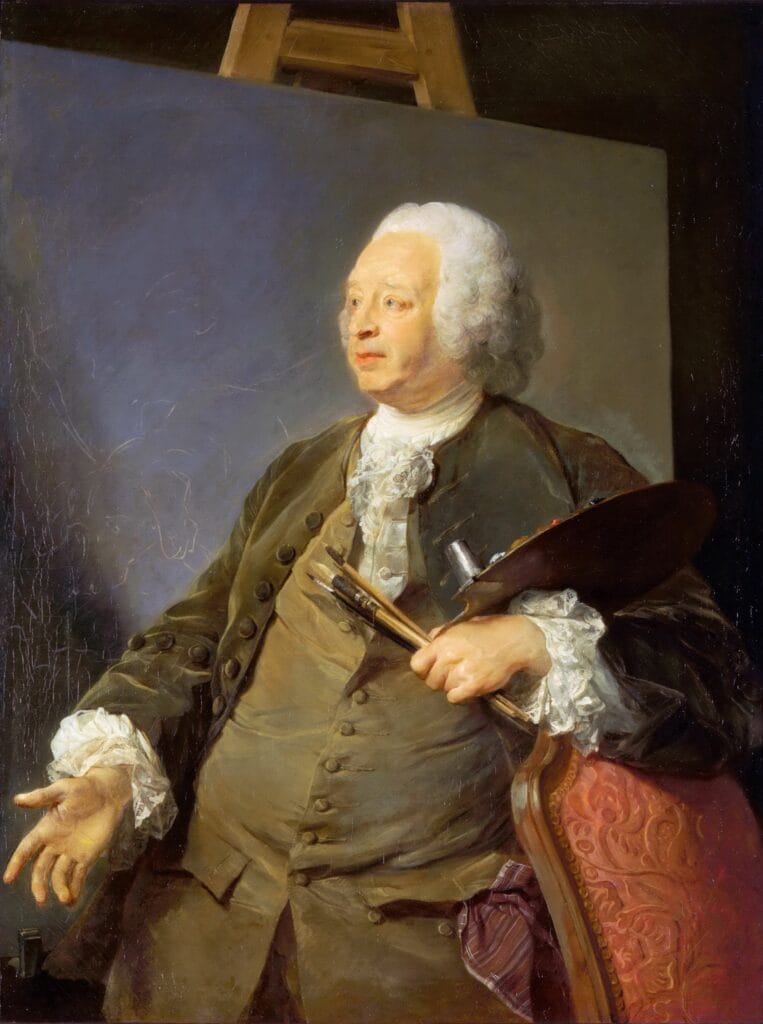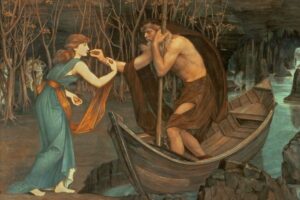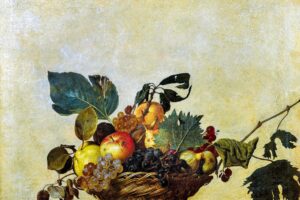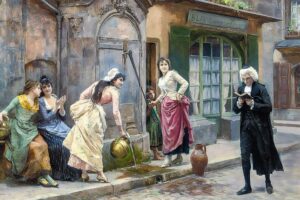Imagine stepping into a peaceful garden filled with blooming flowers, ripe fruits, and one playful, curious guest—a lively little monkey exploring its surroundings. This delightful scene is what Jean-Baptiste Oudry captures in his painting, Still Life with Monkey, Fruits, and Flowers, created in 1724. Oudry, a celebrated French artist, was admired for his skillful portrayals of animals and nature, bringing warmth, beauty, and a touch of playful charm to every scene.
A Curious Visitor
At the center of Oudry’s painting, a mischievous monkey carefully climbs down from a stone ledge, curiously reaching out towards the tempting display of delicious fruits below. Its wide eyes and cautious stance suggest playful curiosity—perhaps it’s about to take a tasty treat or just satisfy its inquisitive nature.
Fruits and Flowers in Abundance
Surrounding the playful monkey is a feast for the eyes—a lavish arrangement of fruits and flowers painted with rich, vibrant colors:
- Ripe Fruits: Luscious peaches, plump grapes, juicy melon slices, and other fresh fruits spill generously from an elegant silver dish. The carefully painted details, including the texture of each fruit, make them appear almost real enough to taste.
- Blooming Flowers: On either side, tall, graceful blossoms rise, painted in delicate shades of pink, blue, and white. Their soft petals and gently curving stems add beauty and balance, creating an enchanting garden scene.
- Elegant Background: Behind these delightful elements, lush greenery and distant trees provide depth, while gentle skies add to the feeling of calm and peace.
Beauty and Curiosity
Jean-Baptiste Oudry’s painting invites us to pause and enjoy the playful harmony of nature. His careful attention to detail, lively composition, and vivid colors create a warm, joyful atmosphere. The curious monkey adds a charming sense of humor and life, reminding us to appreciate nature’s surprises and the simple joys found in everyday moments.
This wonderful painting gently celebrates the richness of nature, curiosity, and the beauty of life’s small pleasures—inviting us into a world of playful discovery.
About Artist

Jean-Baptiste Oudry (1686–1755) was a prominent French Rococo painter who became famous for his portraits of animals, hunting scenes, and still life compositions. While other Rococo artists like Fragonard and Boucher focused on lighthearted human scenes, Oudry’s unique style captured the realism and vitality of the natural world, making him a favorite of the French court and King Louis XV.
Artistic Style and Career
Oudry’s career began with portraiture, but he soon found his true calling as an animal painter. He was known for his naturalism and meticulous attention to detail, which he applied to depicting the textures of fur and feathers. His talent earned him royal commissions and the title of “Painter-in-Ordinary of the Royal Hunt.” He used a more restrained color palette than his Rococo peers, often creating a sense of drama and movement, especially in his hunting scenes. Oudry was also a prolific designer for the royal tapestry factories, including the Gobelins and Beauvais, which allowed his work to be seen on a grand, decorative scale.
Artwork Profile
Oudry’s artwork is celebrated for its technical precision and its ability to elevate subjects considered “lesser” in the artistic hierarchy of the time.
- Still Life with Monkey, Fruits, and Flowers (1724): This painting is a great example of Oudry’s unique style, blending two of his specialties. It depicts a lush arrangement of fruits and flowers, meticulously rendered with a sense of texture and opulence. The scene is enlivened by the mischievous monkey that has intruded, adding a playful, narrative element that was common in Rococo art.
- The White Duck (1753): A well-known still life, this painting is a masterpiece of subtle tonalities and technical skill. It depicts a dead duck, beautifully rendered with a focus on its white feathers, in a setting that highlights its form against a darker background.
- Dog Guarding Dead Game (1753): This work shows Oudry’s skill at combining a still life of a hunt’s spoils with the living presence of an animal. The detailed rendering of the dog and the fallen game demonstrates his naturalistic approach and his official role as the royal court’s animal painter.



